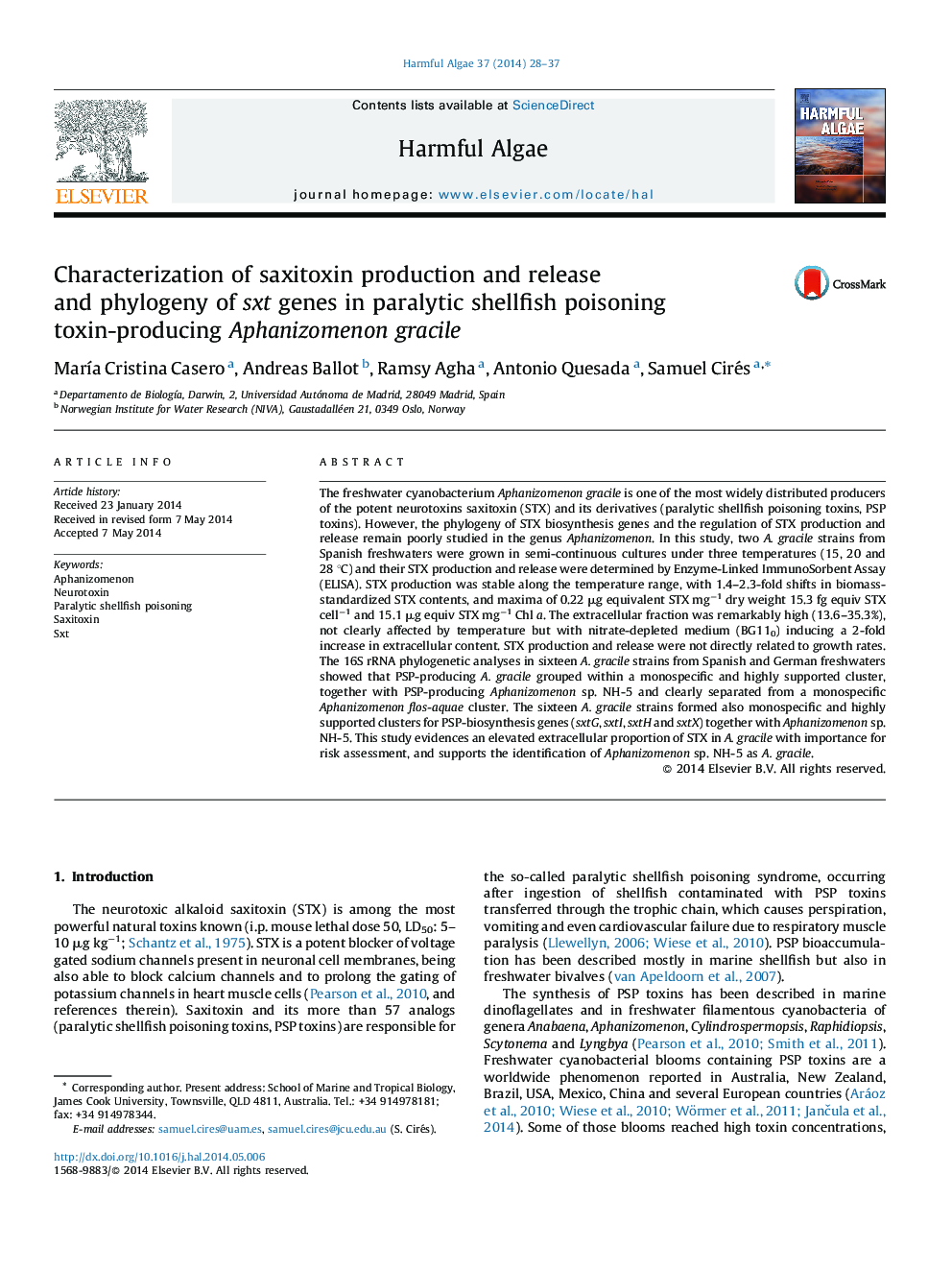| کد مقاله | کد نشریه | سال انتشار | مقاله انگلیسی | نسخه تمام متن |
|---|---|---|---|---|
| 4545331 | 1626934 | 2014 | 10 صفحه PDF | دانلود رایگان |

• Saxitoxin production/liberation and sxt phylogeny studied in Aphanizomenon gracile.
• Saxitoxin production varied 1.4–2.3-fold under a temperature range (15–28 °C).
• The extracellular fraction was remarkably high (13.6–35.3% dissolved saxitoxin).
• 16S rRNA confirmed a strongly supported monospecific A. gracile cluster.
• Sixteen A. gracile strains formed highly homogeneous sxt (sxtG, sxtH, sxtI, sxtX) clusters.
The freshwater cyanobacterium Aphanizomenon gracile is one of the most widely distributed producers of the potent neurotoxins saxitoxin (STX) and its derivatives (paralytic shellfish poisoning toxins, PSP toxins). However, the phylogeny of STX biosynthesis genes and the regulation of STX production and release remain poorly studied in the genus Aphanizomenon. In this study, two A. gracile strains from Spanish freshwaters were grown in semi-continuous cultures under three temperatures (15, 20 and 28 °C) and their STX production and release were determined by Enzyme-Linked ImmunoSorbent Assay (ELISA). STX production was stable along the temperature range, with 1.4–2.3-fold shifts in biomass-standardized STX contents, and maxima of 0.22 μg equivalent STX mg−1 dry weight 15.3 fg equiv STX cell−1 and 15.1 μg equiv STX mg−1 Chl a. The extracellular fraction was remarkably high (13.6–35.3%), not clearly affected by temperature but with nitrate-depleted medium (BG110) inducing a 2-fold increase in extracellular content. STX production and release were not directly related to growth rates. The 16S rRNA phylogenetic analyses in sixteen A. gracile strains from Spanish and German freshwaters showed that PSP-producing A. gracile grouped within a monospecific and highly supported cluster, together with PSP-producing Aphanizomenon sp. NH-5 and clearly separated from a monospecific Aphanizomenon flos-aquae cluster. The sixteen A. gracile strains formed also monospecific and highly supported clusters for PSP-biosynthesis genes (sxtG, sxtI, sxtH and sxtX) together with Aphanizomenon sp. NH-5. This study evidences an elevated extracellular proportion of STX in A. gracile with importance for risk assessment, and supports the identification of Aphanizomenon sp. NH-5 as A. gracile.
Journal: Harmful Algae - Volume 37, July 2014, Pages 28–37